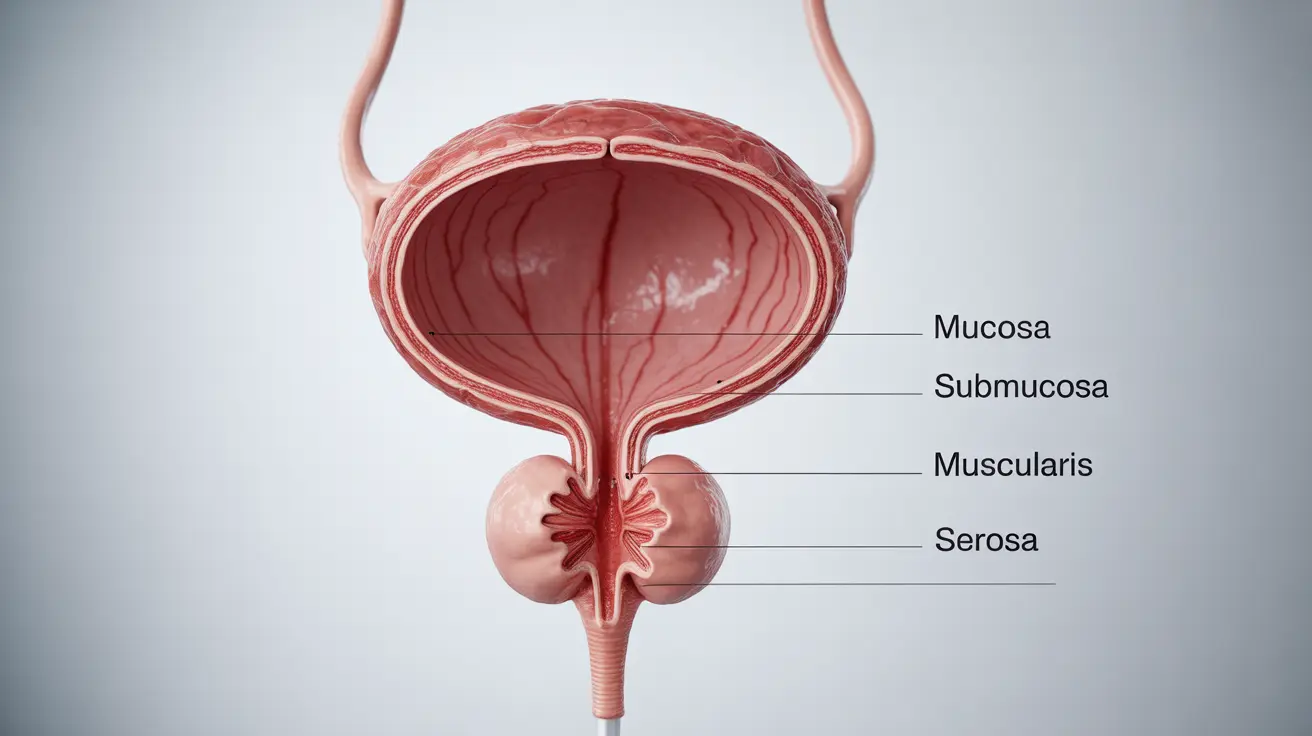The human bladder is a fascinating and essential organ that plays a crucial role in our urinary system. This hollow, muscular organ serves as a temporary storage container for urine before it's expelled from the body. Understanding its structure and function helps us appreciate how this remarkable organ maintains healthy urinary function.
In this comprehensive guide, we'll explore the bladder's appearance, structure, and functional elements, providing clear insights into this vital organ's role in our daily lives.
Physical Appearance and Structure
The bladder's appearance changes dramatically depending on whether it's empty or full. When empty, it resembles a small, collapsed balloon with thick muscular walls, roughly the size of a pear. When full, it expands significantly, taking on a more rounded shape and can hold approximately 400-600 milliliters of urine in adults.
Layers of the Bladder
The bladder wall consists of four distinct layers, each serving a specific purpose:
- The mucosa (innermost layer)
- The submucosa (supportive connective tissue)
- The muscularis (muscular layer)
- The serosa (outer protective layer)
Location and Anatomical Positioning
The bladder sits in the lower pelvis, protected by the pubic bone. Its position varies slightly between males and females due to anatomical differences. In females, the bladder sits in front of the uterus and vagina, while in males, it's positioned just above the prostate gland.
Gender-Specific Differences
Female bladders typically have a shorter urethra and slightly different supportive structures compared to male bladders. This anatomical variation can influence various aspects of bladder function and potential health concerns between genders.
Muscular Structure and Control
The bladder's muscular system is crucial for proper urinary function. The detrusor muscle, which forms the bladder wall, can both stretch to accommodate urine and contract to expel it. Two important sphincters help control urination:
- Internal sphincter (involuntary control)
- External sphincter (voluntary control)
Storage and Release Mechanism
The bladder's structure is perfectly designed for its dual function of storage and release. The muscular walls can stretch significantly while maintaining pressure on the contents. When full, nerve signals trigger the sensation of needing to urinate.
Frequently Asked Questions
What does the human bladder look like when it is empty versus when it is full?
When empty, the bladder appears as a small, collapsed organ with thick walls, similar to a deflated balloon. When full, it expands into a round, balloon-like shape that can hold up to 600 milliliters of urine, becoming about the size of a large grapefruit.
What are the main anatomical parts and layers of the bladder?
The bladder consists of four main layers: the mucosa (inner lining), submucosa (connective tissue), muscularis (muscular layer), and serosa (outer coating). Key anatomical parts include the trigone area, neck, apex, and two important sphincter muscles.
How does the bladder's structure help it store and release urine effectively?
The bladder's muscular walls can stretch to accommodate increasing volumes of urine while maintaining appropriate pressure. The detrusor muscle and sphincters work together to control storage and release, while specialized nerve endings signal when the bladder is full.
Where is the bladder located in the body and how does its position differ between males and females?
The bladder is located in the lower pelvis, behind the pubic bone. In females, it sits in front of the uterus and vagina, while in males, it's positioned directly above the prostate gland. This positioning affects bladder capacity and function differently in each gender.
What role do the muscles and sphincters in the bladder play in controlling urination?
The detrusor muscle in the bladder wall controls expansion and contraction, while two sphincters regulate urine release. The internal sphincter operates involuntarily, and the external sphincter provides voluntary control over urination. These muscles work together to maintain continence and facilitate proper urination.




